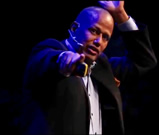Monkeys don’t go to the gym neither should CEOs
Monkeys don’t go to gym, for they live as ONE with their nature of their surroundings. Even if I as a consultant sometimes am working as a “gym trainer” for CEOs I rather set them free in to the nature where they belong. When they let the monkey in them go fee and climb, seeing and feeling what’s out their with their consumers, they will become ONE with nature of business.
Is the reality to complicated then the Zoo at the boardroom?
An example is products that are connected with the great outdoors. The relationship is not always visible in the city, nor are the activities of environmental groups tangible. It is only when there is a concrete connection to what these groups are trying to protect, that a genuine response and true commitment can be inspired.
The difference between a monkey and a human is only around 1%. It is even less between a CEO and a consumer.
Showroom Naturelle
Manufacturers of sporting goods, outdoor clothing, fishing equipment, jeeps and the like have a strong need to communicate on a concrete level. Even nature reserves and national forests can be marketing in a more tangible way. A showroom can be built at a subway station or an airport. The showroom could feature a real forest with live animals and a babbling brook. Climate and genuine forest sounds can be simulated in realistic manner. From the subway with fluorescent lighting straight into the woods. There can be “moose crossing” signs posted around town along with teasers reading: “Deer have been sighted in the subway!”
When the country literally comes to the city, more big city people will become aware of the importance of a clean environment.
The total market for all participating companies would increase proportional to the amount of increased environmental consciousness. Environmental groups can communicate that this is something we all must work together to solve. The target group is active people, that is, people in motion and these people are most easily reached in a subway or at the airport. Where there is movement, there is also consciousness. When consciousness is affected new forms of communications are created.
Experiences in showrooms show conscious or sub-conscious needs which lead to new patterns of consumption.
Other countries’ tourist boards could use showrooms in subways to build miniature replicas of their respective countries. One week Turkey, the next, Tanzania. The idea is to wake curiosity and a longing to see the country for oneself. What values are created when the subway company can advertise: “We can take you around the world, one flight down”?
I leave it to the reader to ponder the implications.
So way pay does CEOs pay for the gym?
















